
If you are looking for a good mechanical gaming keyboard you are probably looking for information about the different types of switch keyboards available on the market. At Newskill we want to make it easier for you with an explanation of the functionalities of the Kaihl and Outemu switch mechanisms
Different types of keyboard switches
You have already located a list of mechanical gaming keyboards but you don't know which type of switch is best suited to your type of game. Each type of keyboard switch has a different set of functions and knowing which ones make more or less noise when typing and which ones are more useful for playing a MOBA or an FPS always helps. Here's a breakdown of two of the most commonly used keyboard switch mechanisms in the gaming industry: Kaihl and Outemu. The main differences between the two types of switches lie in their keystroke strength.
Kaihl keyboard switch mechanism
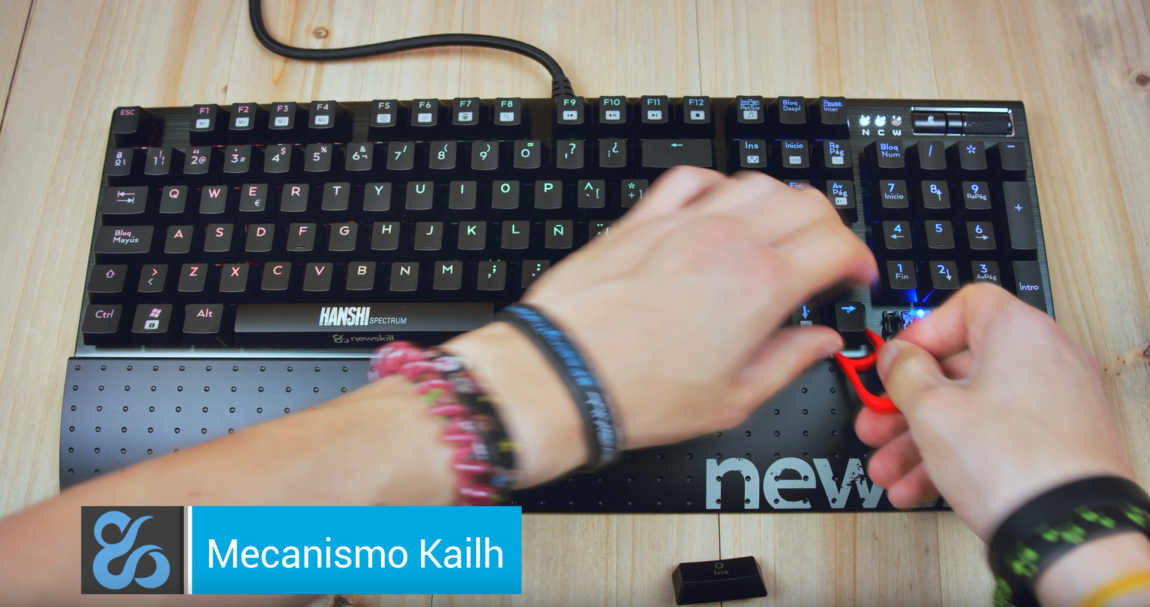
The Hanshi Spectrum mechanical gamer keyboard features the Kaihl mechanism, available in three different switch types: red, blue and brown.
Red switch
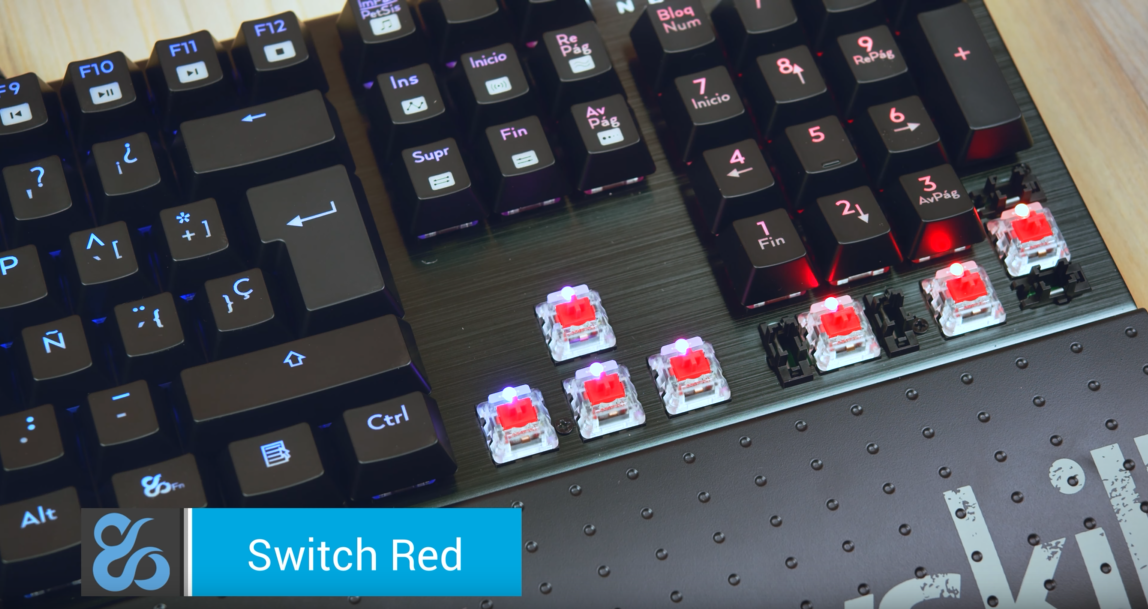
The red switch type of the Hanshi Spectrum keyboard has a durability of over 55 million keystrokes and a keystroke force of 50 gf. It is perfect for experienced players, as the sensitivity adjusts to their type of gameplay and features smooth typing (fast and responsive), high responsiveness and easy double tapping. The touch type of the Hanshi Spectrum keyboard with the switch kaihl red has a linear touch type.
Switch Blue
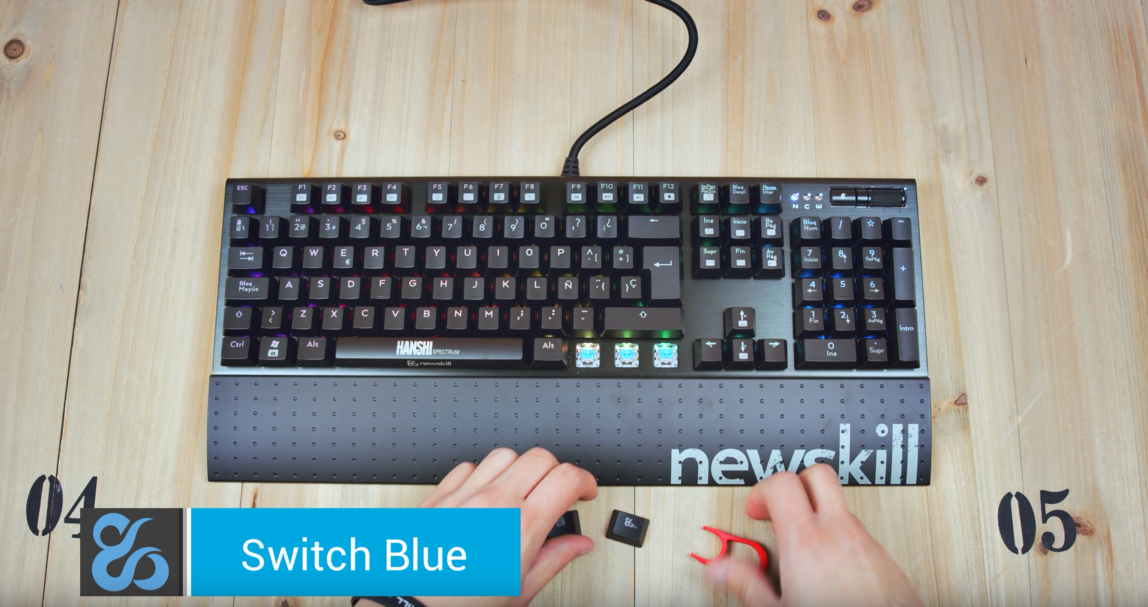
Like the red switch type, the blue switch supports 55 million keystrokes and has a keystroke force of 50 gf. It is the ideal switch type for both typing and enjoying long gaming sessions. The touch type of Hanshi Spectrum keyboard with the kaihl blue switch has a tactile touch type and emulates the click of a mouse when we press on a key
Brown switch
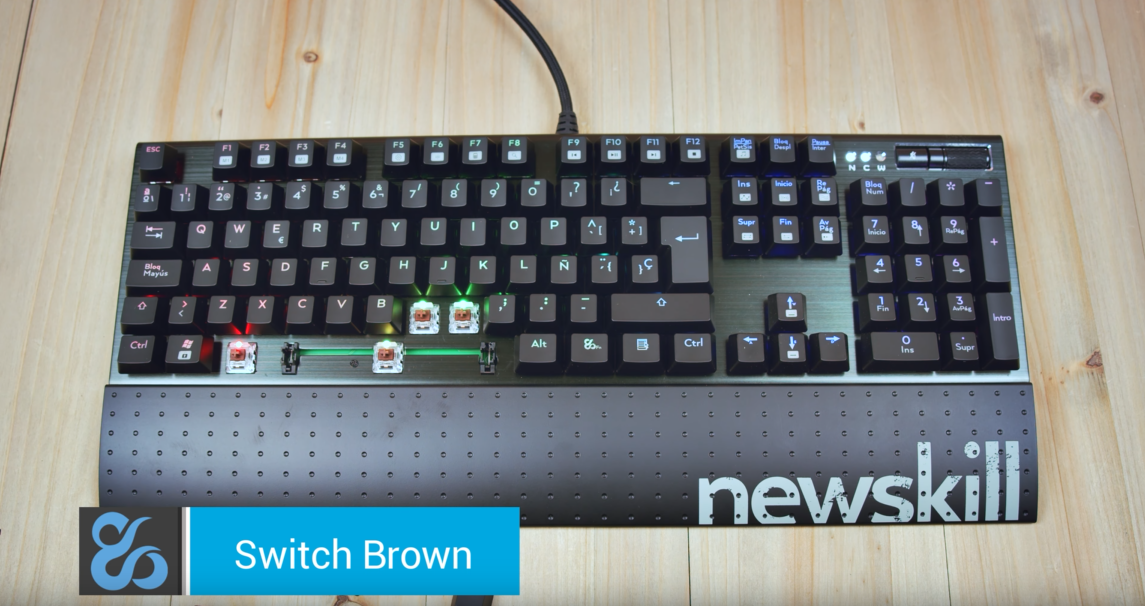
Like the red and blue switch type, the switch blue supports 55 million keystrokes. However, it has a keystroke force of 42 gf. The brown switch has a quieter sound and is intended for gaming and office use. It has a soft touch and balanced performance and allows for quick successive key presses. The touch type of the Hanshi Spectrum keyboard with the kaihl brown switch has a tactile type of touch, but unlike the switch blue, it does not have a sound similar to a mouse click.
From Newskill we have prepared a video showing the differences between the three types of switch of the Kaihl mechanism so you can hear the sound emitted by each of them. On the back of the keyboard is included a tool to remove the keys from the keyboard.
Outemu keyboard switch mechanism
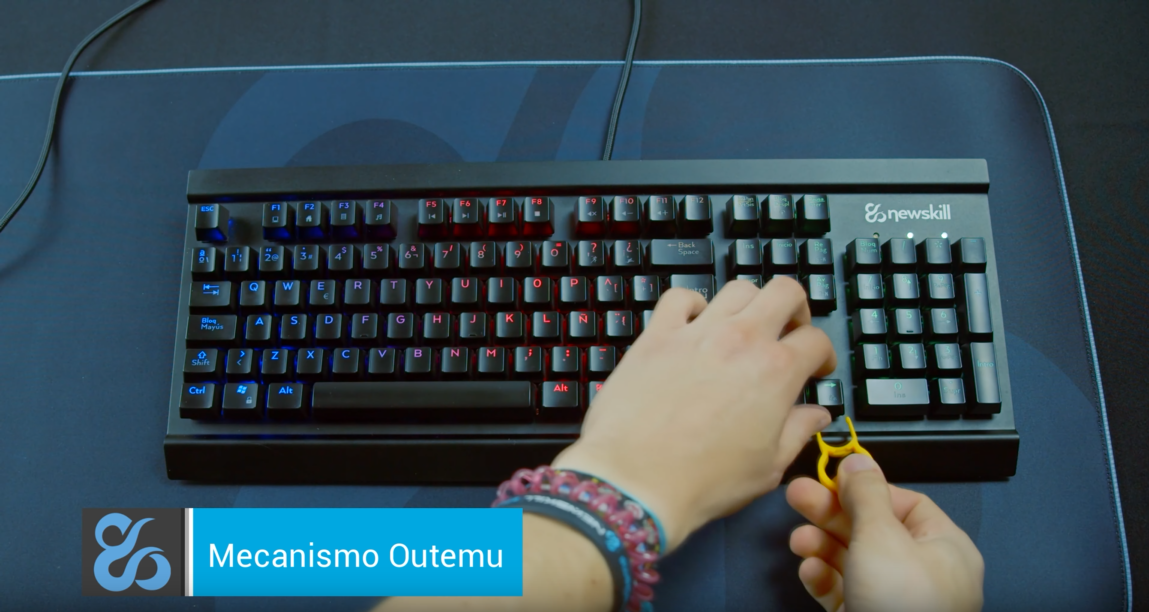
The Thanatos mechanical gaming keyboard features the Outemu mechanism, available in three different keyboard switch types: red, blue and brown.
Red switch
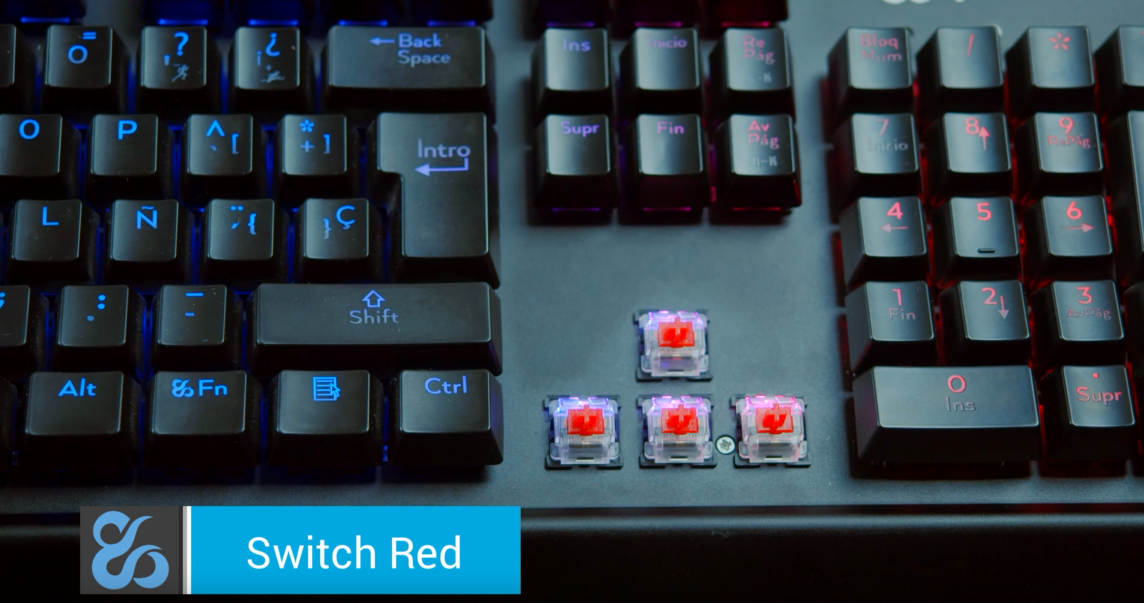
The Thanatos keyboard's red switch type has a durability of over 55 million keystrokes and a keystroke force of 47 gf. It is perfect for experienced gamers, as the sensitivity adjusts to their type of gameplay and features smooth typing (fast and responsive), high responsiveness and ease of double tapping. The touch type of the Thanatos keyboard with the Outemu red switch has a linear touch type.
Switch Blue
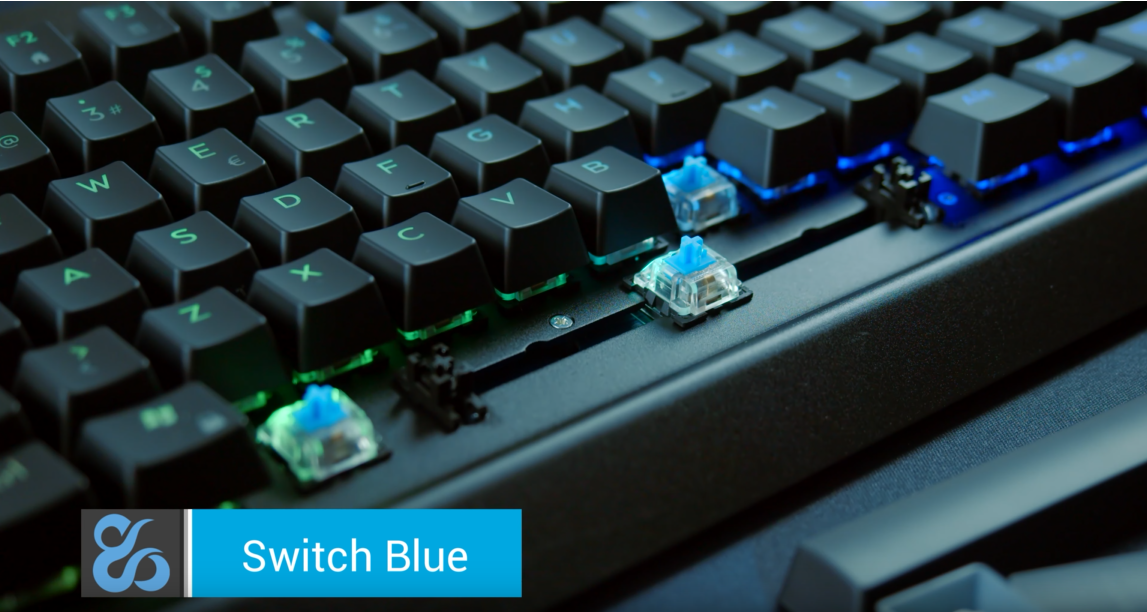
Like the Outemu red switch type, the blue switch supports 55 million keystrokes. The pulsation force is slightly lower (46 gf). It is the perfect switch type for both typing and long gaming sessions. It has a high typing speed and its sound is louder. The touch type of the Thanatos keyboard with the Outemu blue switch has a tactile touch type and emulates the click.
Brown switch
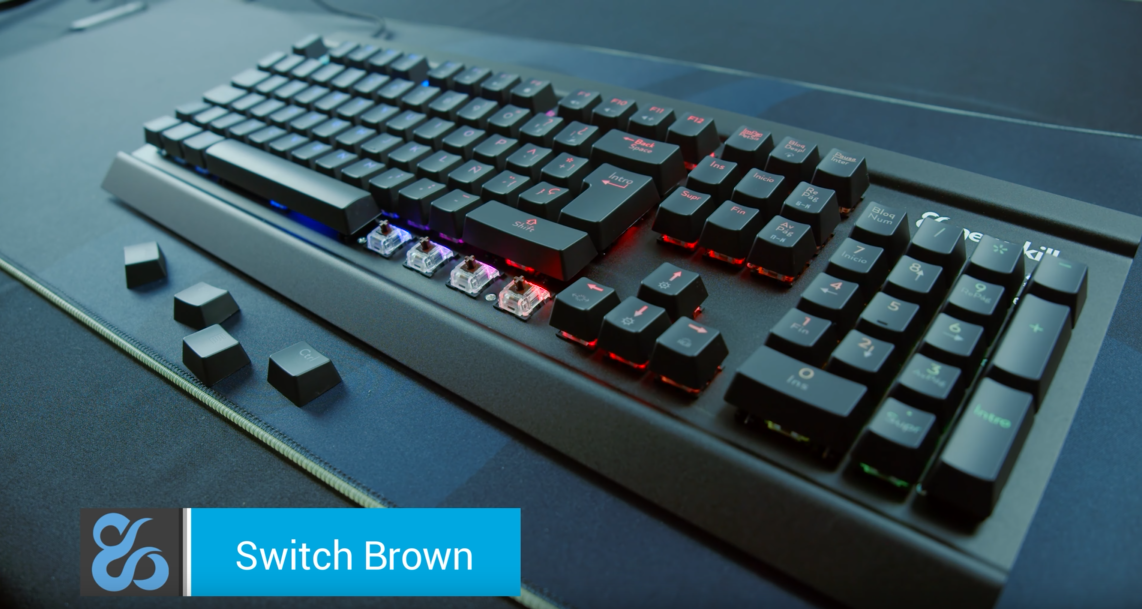
Like the red switch type, the brown switch supports 55 million keystrokes. However, it has a pulsation force of 40 gf. The brown switch has a quieter sound and is intended for gaming and office use. It has a soft touch and balanced performance and allows for quick successive key presses. The Thanatos keyboard with the Outemu brown switch has a tactile feel, but unlike the blue switch, it does not have a sound similar to a mouse click.
Below is the video showing the differences between the three switch types of the Outemu mechanism. A tool is included on the back of the keyboard to remove the keys from the keyboard.





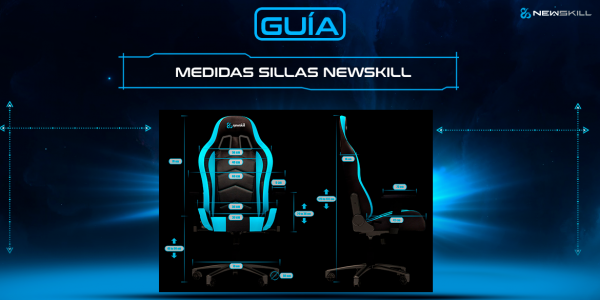
Comments (0)